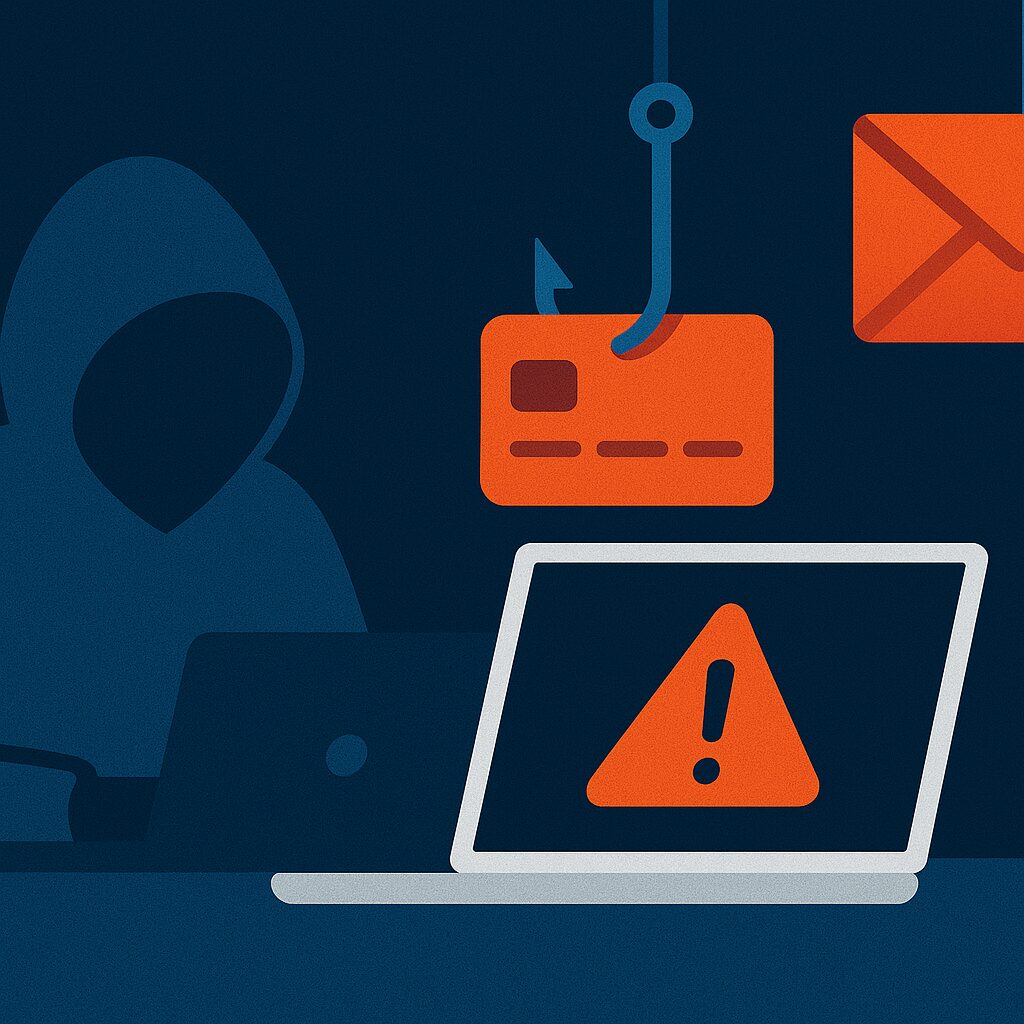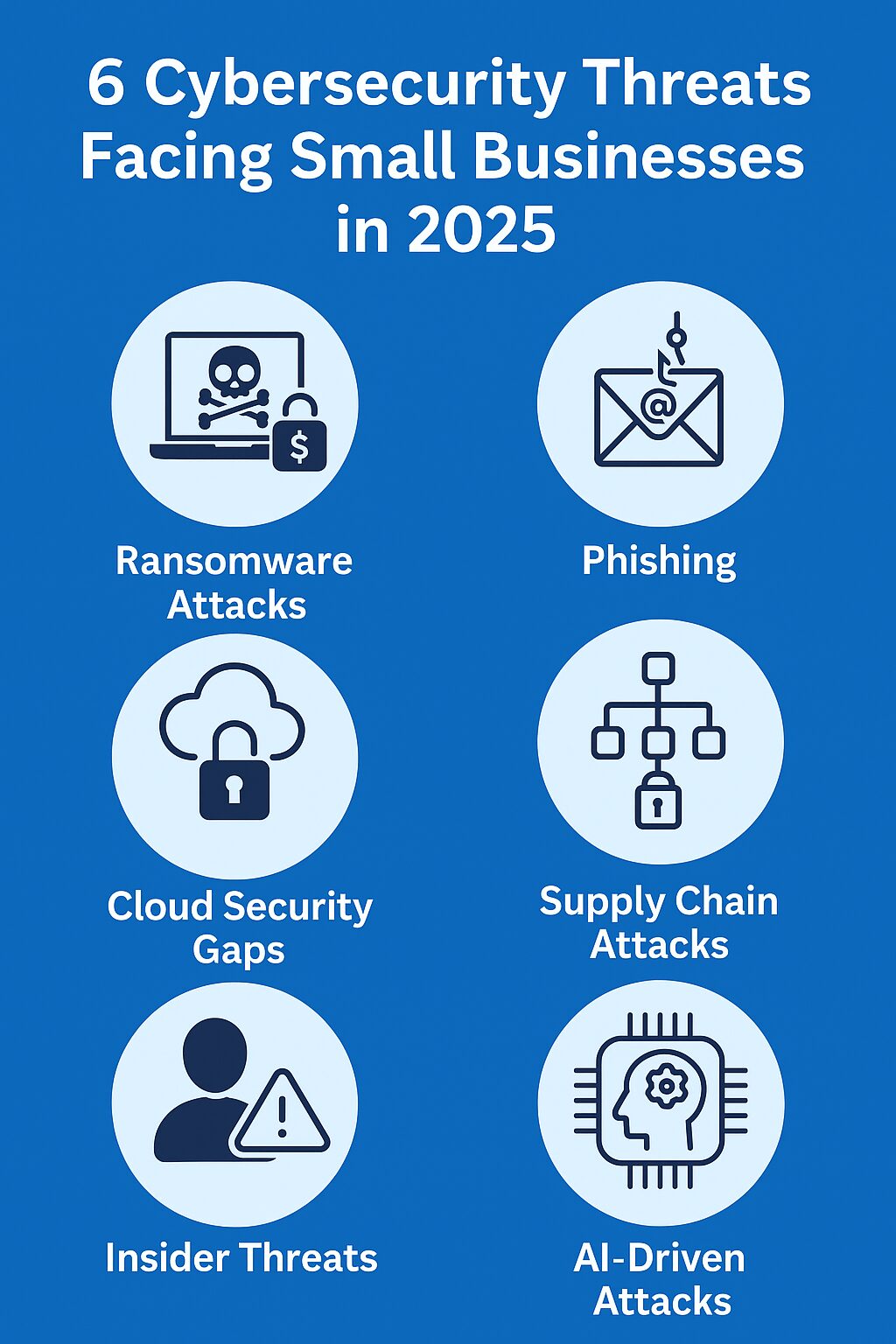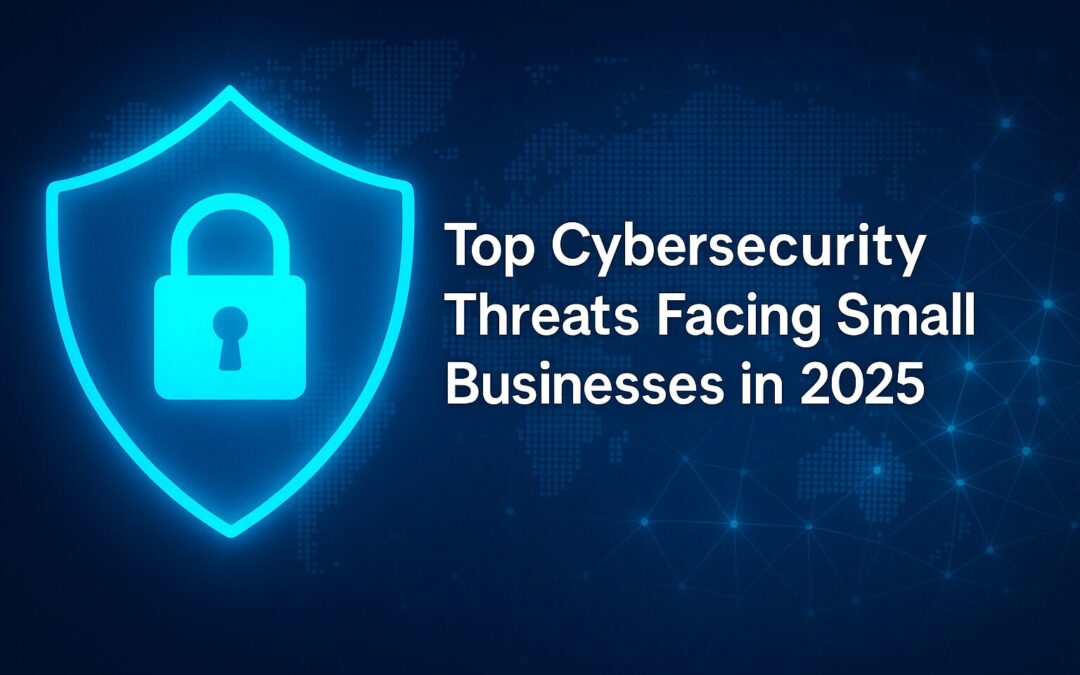Why Cybersecurity Threats Are Rising for Small Businesses
Small businesses are no longer “too small to target.” In fact, attackers increasingly view them as prime opportunities because they often lack the layered defenses of larger enterprises. According to recent reports, nearly 60% of small businesses that suffer a cyber attack close within six months due to financial and reputational damage.
The year 2025 brings new technologies, but also new risks. Artificial intelligence, cloud adoption, and remote work environments are reshaping how small businesses operate — and how criminals exploit vulnerabilities.
This article explores the top cybersecurity threats small businesses must prepare for in 2025, with practical insights on how to defend against them.
Ransomware Attacks Are Becoming More Sophisticated
Ransomware continues to dominate the threat landscape, but in 2025, attacks are far more advanced than the crude lockouts of years past.
-
Double Extortion: Hackers now exfiltrate sensitive data before encrypting systems. Even if you restore from backups, they can threaten to leak stolen data.
-
Ransomware-as-a-Service (RaaS): Attack kits sold on the dark web make it easier for criminals with limited skills to launch attacks.
-
Targeted Attacks: Instead of “spray and pray” tactics, cybercriminals are increasingly targeting specific industries like healthcare, retail, and professional services.
Defense Tips:
-
Maintain offline backups and test them regularly.
-
Invest in endpoint detection and response (EDR) tools.
-
Train employees on recognizing suspicious emails and links.
Phishing Remains the #1 Entry Point
Despite being one of the oldest tricks, phishing is more effective than ever in 2025 because of AI-generated emails and deepfake audio/video.
-
AI-Powered Phishing: Attackers use generative AI to craft highly convincing emails that mimic tone, style, and context.
-
Business Email Compromise (BEC): Fraudsters pose as executives or vendors to trick staff into wiring money or sharing sensitive data.
-
Voice and Video Spoofs: Small businesses are seeing scams where a “CEO’s voice” requests urgent financial transfers.
Defense Tips:
-
Implement multi-factor authentication (MFA) across all accounts.
-
Use email filtering solutions that detect spoofed domains.
-
Regularly test employees with phishing simulations.

Cloud Security Gaps Are Widening
Cloud adoption has exploded among small businesses — from file storage to customer relationship management. But with convenience comes risk.
-
Misconfigured Cloud Storage: Open or improperly secured databases are a favorite target for hackers.
-
Shared Responsibility Confusion: Many small businesses wrongly assume their cloud provider handles all security.
-
Shadow IT: Employees adopt unauthorized apps, increasing vulnerabilities outside official IT oversight.
Defense Tips:
-
Conduct regular cloud configuration audits.
-
Clarify shared responsibility models with providers.
-
Deploy identity and access management (IAM) controls.
Supply Chain Attacks Are Growing
Small businesses often rely on vendors, SaaS apps, and third-party services — making them indirect targets.
-
Software Dependencies: A vulnerability in a widely used library or plugin can expose thousands of businesses.
-
Vendor Compromise: Attackers infiltrate a supplier to reach downstream partners.
-
Managed Service Providers (MSPs): Cybercriminals increasingly target MSPs to gain access to multiple client environments.
Defense Tips:
-
Vet vendors for security certifications (SOC 2, ISO 27001).
-
Limit third-party access to least privilege permissions.
-
Request vendor risk assessments annually.
Insider Threats Are Increasing
Not all risks come from outside. Employees, contractors, or disgruntled staff can inadvertently or intentionally cause harm.
-
Accidental Errors: Clicking malicious links or mishandling sensitive files.
-
Malicious Insiders: Exfiltrating company data for financial gain or revenge.
-
Remote Work Risks: Home networks and personal devices expand the attack surface.
Defense Tips:
-
Provide regular cybersecurity awareness training.
-
Monitor for unusual data transfer activity.
-
Enforce access control policies with role-based permissions.
AI-Driven Attacks Are on the Rise
AI is a double-edged sword. While businesses use it to strengthen defenses, attackers also leverage it to launch faster, more tailored attacks.
-
Automated Vulnerability Scanning: Hackers use AI to find weak points in small business networks at scale.
-
AI Malware: Adaptive malware that changes behavior to evade detection.
-
Synthetic Identity Fraud: AI-generated fake identities used for financial fraud.
Defense Tips:
-
Stay updated with AI-driven cybersecurity tools.
-
Use threat intelligence feeds to detect evolving attack trends.
-
Partner with consultants or MSSPs who specialize in AI threat detection.
FAQs on Cybersecurity Threats for Small Businesses
What is the biggest cybersecurity threat to small businesses in 2025?
Ransomware remains the top threat, but phishing — especially AI-powered phishing — is the leading entry point for most attacks.

Why are small businesses such big targets?
Attackers know small businesses often lack advanced defenses, dedicated IT staff, or formal incident response plans, making them easier to breach.
How much does a cyber attack cost a small business?
On average, small business breaches cost between $120,000 to $250,000, with some exceeding $1M when factoring in downtime, legal fees, and reputational loss.
What’s the most cost-effective way for small businesses to boost cybersecurity?
Implementing multi-factor authentication (MFA), training employees, and maintaining reliable backups are low-cost but highly effective measures.
Should small businesses invest in managed security services?
Yes — MSSPs provide 24/7 monitoring and expertise that small businesses often can’t afford in-house, making them a strong investment.
Building Resilience Against Cybersecurity Threats
Cyber threats in 2025 are more sophisticated than ever, but small businesses don’t have to be defenseless. By understanding the most pressing risks — ransomware, phishing, cloud vulnerabilities, supply chain attacks, insider threats, and AI-driven exploits — leaders can make smarter security investments.
The key takeaway: cybersecurity is no longer optional, it’s a business survival strategy. Small businesses that proactively train staff, secure systems, and partner with trusted cybersecurity providers will not only reduce risks but also build resilience, trust, and long-term growth.

